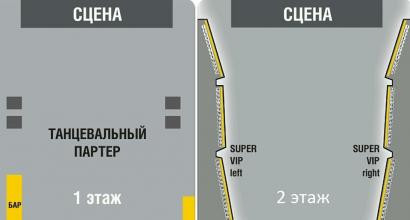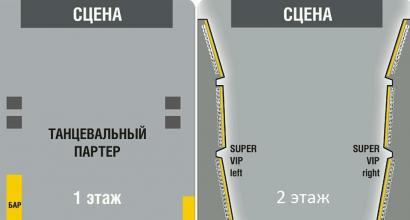Virtual planes. Virtual Airplanes Airplane Tour
The Boeing 777-300 is the world's largest passenger aircraft powered by two engines. The airliner is built on the basis of the previous Boeing 777 model, it has an increased number of seatsand an increase in flight range.
The Boeing 777 began operating on long-haul routes in 1998.
The production of the airliner continues to this day. It has two and three class layouts; there are imperial-type passenger seats. In the air transportation market, the Boeing 777-300 competes with the Airbus A340-600.
Specifications
Aircraft dimensions
Airliner length: 73.90 m;
Aircraft height: 18.60 m;
Wingspan: 60.91 m;
Wing area: 427.81 m
Flight characteristics
Flight range with maximum load: 11090 km;
Maximum cruising speed: 945 km / h;
Path length: 1 810 m;
Number of seats
Crew: 2 places;
Passenger maximum: 550 seats;
Passenger in two-class version: 479 seats.
Passenger seats in three-class version: 365 seats.
Take a fun, educational virtual tour of the Boeing 777-300 cabin
Boeing 777-300 is the largest passenger aircraft in the world equipped with two engines. The airliner is built on the basis of the previous Boeing 777 model and is distinguished by an increased number of seats and an increase in flight range.
The Boeing 777 began operating on long-haul routes in 1998.
Boeing 777-200 aircraft cabin virtual tour

The Boeing 777 is the largest twin-engine jet airliner in the world. In the 90s, for the first time in the development of design documentation, 3D technologies and computer modeling were used.
In 1995, the use of advanced technologies and the installation of additional fuel tanks made it possible to perform long-distance and ultra-long-distance flights with a length of up to 17,000 km on aircraft of this modification.

The Boeing 767 is a wide-body twin-engine jet airliner, produced in 1981 and designed for medium to long haul flights.
Boeing 767 is recognized as one of the safest and most reliable airliners in the world.

Boeing 747-400 is a long-haul aircraft produced in 1989 to carry up to 600 passengers. It is Boeing's most popular and recognizable aircraft model.
Increased comfort, an increase in the flight range and the number of passenger seats, and a fundamentally new configuration distinguish the Boeing 747-400 from the previous model.
Boeing 738-400 / 800 virtual cabin tour

Boeing 737-400 aircraft used for charter flights, modified model of Boeing 737-300.
The engines, interior, avionics have been updated, which allows many companies to operate it to this day.
Boeing 738 Imperial Airplane Cabin Virtual Tour

The Boeing 737 Imperial is a class 4 airliner with 56 seats. Differs in the highest quality interior materials, individual menus, modern video and music playback system.
Convertible tables tables will create the best environment for work and relaxation.

The Boeing 737-500 is a medium-range aircraft that replaced the Boeing 737-300 in 1990. The designers reduced the length of the aircraft and increased the flight range. Despite the fact that the production of this aircraft model was discontinued in 1999, many airlines continue to operate it due to its high reliability.
Boeing 737-300 / 700 virtual cabin tour

The Boeing 737-300 is a medium-range aircraft, a classic representative of the Boeing 737 family, has been operating since 1984, today it is practically out of production.
The Boeing-737-300 is gradually being replaced by new, more modern members of the family - Boeing 737-400 and Boeing 737-500
The new versions of the B737 300 are the Boeing 400, 800 and 900, which are gradually replacing the outdated model.
Virtual tours of Transaero Boeing aircraft

Transaero specialists kindly provided the opportunity to take a virtual tour of the cabins of their Company's aircraft.
During the virtual tour, visitors will see the salons of various types of aircrafts, will be able to examine the interior, learn how to use the equipment in Imperial and Business classes, and learn some technical information.
Or Samsung Gear VR needs to be worn for full VR experience.
For the first time, the aircraft based on the Boeing-747 began to be used in 1959, as a dedicated presidential carrier. He served Eisenhower, Kennedy, Johnson and Nixon.
The aircraft is currently on display at the Seattle Aviation Museum.
But you can take a virtual tour of the 3D model.
A 3D tour begins in the middle of the plane, unmistakably indicated by the boss's chair in front of a table surrounded by seating benches.
Heading towards the rear of the plane, you will walk through the hall and past the secretary's seat on the right. The rows of blue seats, familiar to any air passenger, are intended for guests.
At the end there are two cozy toilet cubicles and a cooking area with unusual (for that time) kitchen utensils.
Virtual tour of the president's plane.
full version of the 3D tour on board # 1
In the future, a complete set of jet airbus for the first persons is planned to be equipped with Spa centers and bars
Return to the front of the plane.
Go back past the boss chair to the president's private office. You can step through the open door.
There is a narrow desk with communications equipment and a bench that converts into a bed. This Spartan style served President Eisenhower, who was the first president to use this aircraft. "He said this is a place to work, not a flying palace."
Each president has brought personal touches to make his stay on board number one easier.
Lyndon Johnson added a hat holder under the table to accommodate his huge Stetson Stetson A cowboy hat (stetson) is a felt, leather or straw hat with a high rounded crown, concave at the top, and with wide brims bent up at the sides. The modern cowboy hat was invented by John Stetson. , and a door for dogs so that his hounds can roam the plane freely.
A lot of rare items were stolen by visitors during previous views, so now Plexiglas protection is applied, which does not interfere with viewing the remaining rarities.
Continue forward to the cockpit, past the kitchen. To the left is a safe that carries nuclear codes when the president is on board.
On the right is a communications station to give the president a secure line for negotiations with the ground. Pay attention to the poster reminder: “No secret information with the speaker of the console” something like “Chatterbox find for a spy”
The aircraft control cockpit has four seats, for the commander, co-pilot, navigator and engineer.
An article for 3D fans.


